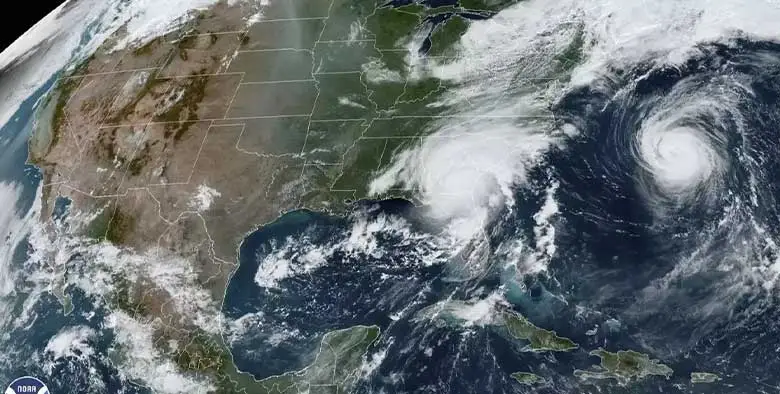- Know Everything About Nipah Virus, Which Is Back In Kerala Again
- Kevin Porter Jr Arrested On His Girlfriend’s Assault Charge
- Market Change Overnight - Know The 8 Things That Did It
- Who Are Alba Baptista And Chris Evans Married On The Weekend?
- Disrupted India vs Pakistan Asia Cup 2023 Match on Reserve Day
- 10 Common Foods That Contain No Calories or Are Very Low in Calories
- Men’s Styling Tips - Know the 9 Common Style Mistakes to Avoid
- Coco Gauff Beats Karoline Muchova and Reaches the US Open Final
- Danny Masterson Gets Life Sentence of 30 Years for Two Rapes
- Experience A Splendid Vacation in Kashmir with These 15 Gorgeous Sights
- India
- Saturday , July 27, 2024
- Last Published Sep 12, 2023, 6:48:32 PM

Tropical Storm Lee Changes As A Dangerous Hurricane By Weekend
On Wednesday, 6 September, the US National Hurricane Center (NHC) said that the formation of a tropical storm, Lee, has taken place over the Atlantic and could turn into a serious hurricane later on. In the official statement, weathermen said that it is too early to say anything about the probable impacts of Hurricane Lee that is in the buildup stage.
The NHC said, “Lee is forecast to become a major hurricane... and could bring impacts to the Leeward Islands”. Further, it added, “While it is too soon to determine the location and magnitude of these possible impacts, interests in this area should monitor the progress of Lee”.
As per the forecast, winds from this tropical storm can reach 233 kilometers per hour in the later part of the current week. This transformation of the tropical storm would make it a dangerous hurricane. The NHC places it into a category of four hurricanes. It means Hurricane Lee will cause catastrophic damage if it makes a landfall.
According to the NHC data, tropical Storm Lee originates on Tuesday in the Atlantic Ocean. The position of the storm was around 1980 kilometers to the east of the Antilles. At the time of its origin, it had a wind speed of 85 kilometers per hour (50 mph). It was moving at a speed of 16 mph towards west-northwest.
The NHC expects that this tropical storm could be a severely dangerous hurricane by Friday and pass the northeast of the Caribbean region. Earlier prediction of Hurricane Lee does not expect a landfall. However, the developments taking place after Tuesday say it might be an extremely dangerous hurricane and might bring heavy damages with a probable landfall.
A few days ago, Hurricane Idalia had a landfall in Florida and caused several damages to homes, powerlines and severe weather conditions in Georgia. In addition, power shortages for days affected more than two thousand people. According to the forecast, the 2023 Atlantic hurricane season could be more active in comparison with previous years, even though the season peak is away for a week.
As per the available information and study results, it is not clear how climate change influences the frequency of tropical storms. However, a significant increase in temperatures on the sea surface makes the air warm above that drives energy to facilitate the development of hurricanes. This results in more powerful hurricanes with heavy rainfall.











